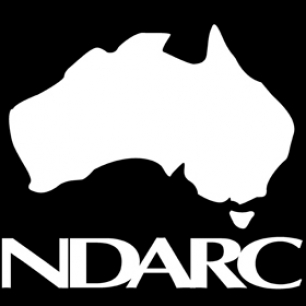New study finds more than one in five Australians abuses alcohol – one of the highest rates in the world; four out of five with alcohol disorders go untreated; young men still most at risk.
More than three and a half million Australians will experience problems of alcohol abuse and dependence during their lifetime but only one in five of these seeks treatment, according to a new study from the National Drug and Alcohol Research Centre (NDARC) at the University of New South Wales. The report, published online in Addiction and launched today at the NDARC Annual Symposium, provides the first ever lifetime estimates of alcohol problems in Australia.
The study, analysing data from the 2007 National Survey of Mental Health and Wellbeing, has found 22 per cent of Australians will have an alcohol use disorder, either alcohol abuse* (18 per cent) or dependence (four per cent) , over their lifetime – with nearly a third of men experiencing a problem at some time. Young men were two and a half times as likely to have current alcohol use problems as the rest of the population – with more than 11 per cent of men aged 16 to 24 reporting symptoms consistent with an alcohol use disorder over the previous 12 months.
Lead author of the report, NDARC’s Professor Maree Teesson said that Australia has one of the highest rates of alcohol use disorders in the world. It rates on a par with America and New Zealand. She said it was alarming that in the 10 years since the last National Survey of Mental Health and Wellbeing the number with problems remained so high and that there had been no increase in the number receiving treatment.
“One reason for the lack of treatment is that alcohol problems still have a terrible stigma about them,” says Professor Teesson. “People are much less likely to want to own up to having a problem with alcohol than they are about other physical or mental illnesses, yet their abuse of alcohol has serious consequences to them personally and around them including getting into fights, drink driving, taking time off work, child neglect, getting into trouble with the Police, and driving while drunk.”
Professor Teesson says the alcohol sector needs to learn from the highly successful local and international campaigns that have helped to reduce the stigma around mental illnesses such as depression and which have encouraged people to receive treatment and encouraged prevention of problems before they occur.
“Alcohol problems are most common in young men, so we need better interventions and prevention strategies for young Australians,” said Professor Teesson. “People need to know that alcohol abuse which is impacting on their personal, home or work life can be treated.”
Professor Paul Haber, Medical Director Drug Health Services for Sydney South West Area Health Service, said treatment for alcohol problems is generally not readily available to people and requires more funding.
“There is evidence that treatment for alcohol disorders is effective but people are either not confident in the treatment that exists or they simply don’t know where, how and when to access it,” he said.
The number of women aged 30 to 40 drinking alcohol has increased significantly compared with previous generations but there had been no increase in the number of these women drinking at risky levels. By contrast, there has been a big jump among young men aged 20 to 29 drinking at risky levels.
Disturbingly 42 per cent of Australians with alcohol problems have at least one co-existing mental illness, such as depression or an anxiety disorder. Yet while close to half of all Australians suffering from depression are being treated, only 22 per cent of people with alcohol related problems receive help.
Key findings from the report:
- A random sample of nearly 9,000 Australians aged 16 to 85 responded to the survey;
- 22 per cent of Australians have alcohol disorders over their lifetime – 18.3 per cent experience alcohol abuse and 3.9 per cent are dependent. Only 22.4 per cent with alcohol problems are treated;
- One third of men will have a problem at some point compared with 12 per cent of women;
- Married people and people from a non-English speaking background are less likely to have a problem with alcohol;
- More young women are drinking but no increase in their drinking at risky levels;
- Men born between 1978 and 1987 are 1.7 times more likely to drink at risky levels than those born ten years earlier.
Prevalence and correlates of DSM-1V alcohol abuse and dependence in Australia: findings of the 2007 National Survey of Mental Health and Wellbeing. Addiction, 2010 (online).
A media call to discuss the findings will be held at the NDARC Annual Symposium at 10.15am on Tuesday August 10, John Niland Scientia Building, University of NSW. To view the Symposium program please see the attachment at the bottom of this page.
*Note to editors: alcohol abuse does not measure quantity consumed but relates to the impact of using alcohol including: failure to fulfil duties at home or work; using alcohol in dangerous situations such as driving; legal problems; fights with spouse over use of alcohol.


